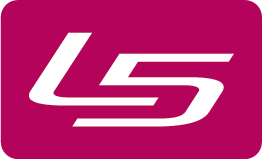
MANAGEMENT OF ACL INJURIES COURSE
Master the art of ACL Rehabilitation with this 8-hour course, developed by two knee experts: Lee Herrington and Sebastiano Nutarelli. They are specialized physical therapists and clinical researchers. The concept underpinning the structure of this course aims to be solidly based on the best available evidence (published and not published yet) and the clinical expertise accumulated by the instructors, constantly updated to provide clinicians with a comprehensive theoretical and heavily practical learning pathway around the rehabilitation following ACL injuries.
Velg episode
-
Episode 1.
Intro & Pre op
This chapter covers: The extent of the ACL injury problem, the differences in rates between genders and the factors which impact on injury causation. How to frame ACL rehabilitation as a criteria-based progression with clear pilars to be targeted along the way, facilitating a productive cooperation between the orthopaedic specialist and the physicial therapist. The key considerations for the management of the pre-operative phase
-
Episode 2.
Immediate post op (early rehab) phase
This chapter covers: The management of the acute phase typical elements such as wound care, pain & swelling control, mobility progressions, and the return to the activities of daily living. How to regain range of motion and preserve patellar mobility being aware of the strategies to apply in case things don't evolve as commonly expected. The strategies which can be used to overcome muscle (particularly) quadriceps inhibition. How to incorporate early eccentric loading into the rehabilitation program. The importance of load management in the recovery of the patient and how to monitor for the impact of changing load intensity through the program
-
Episode 3.
Pillar 1: Developing force
This chapter covers: Some common terminology used from now on and the utilization of open Vs close kinetic chain in the exercise prescription during ACL rehabilitation. Approaches which could be used to develop strength (maximal force) in the key muscle groups and how to programme them. The importance of also improving rate of force development and approaches to developing improved rate of force development. Science and prescription principles behind blood flow restriction and isoinertial training in ACL rehabilitation. How to reliably test force with hand-held dynamometers, isokinetic machine, and force plates eventually interpreting the outcomes comparing them with normative values. The key measureable objectives for force based training and the expected minimal standards for optimising outcome.
-
Episode 4.
Pillar 2: Developing movement skill
This chapter covers: How to develop static stability and movement dissociation and their assessment. How to use a variety of scoring systems to assess movement quality. The involvement of the cognitive component in closed Vs open skills, and how perturbating the visual, vestibular, and cognitive domains can provide a more effective rehabilitation. The different approaches of coaching movement skills and conceptual considerations on avoiding Vs gradually exposing ACL patients to movement commonly considered as 'dangerous'. How to progress from static exercises to landing tasks and the criteria which could be used. How to use hop tests and maximise the impact to the data from them for progression decision making.
-
Episode 5.
Pillar 3: Developing metabolic conditioning
This chapter covers: How to take the fitness status into account along the rehabilitation process with actual intervention principles.
-
Episode 6.
Pillar 4: Developing tissue resiliance
This chapter covers: The relationship between bony oedema and osteoarthritis, and how they impact on the long term outcome for ACLR patients. Methods which could be used to assess for and manage load exposure.
-
Episode 7.
Return to Run
This chapter covers: The pre-requisites required to allow for optimal progression into linear running, the role of AlterG and how to progress linear running sessions.
-
Episode 8.
Return to Change of Direction (COD)
This chapter covers: The pre-requisites required to allow for optimal progression into acceleration and deceleration training and the development of some training parameters. The pre-requisites required to allow for optimal progression into change of direction running, how to assess change of direction and the development of some training parameters.
-
Episode 9.
Return to Sport
This chapter covers: The return to sport (RTS) continuum embracing pre-requisites, test batteries, the role of testing physical & cognitive qualities in fatigued-conditions, eventually considering a cluster of parameters beyond the current missing consensus on RTS.
-
Episode 10.
Prevention/injury risk reduction
This chapter covers: Effectiveness, barriers, and new directions of ACL injuries risk reduction programs.
